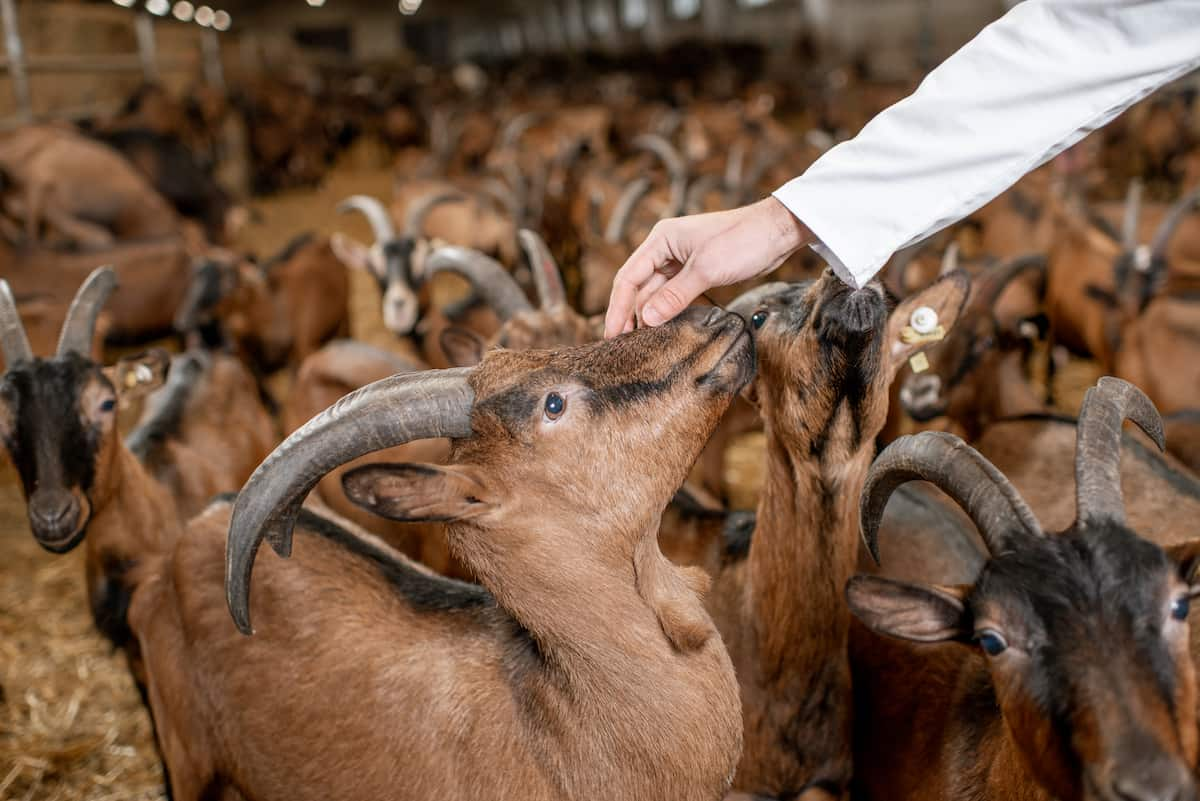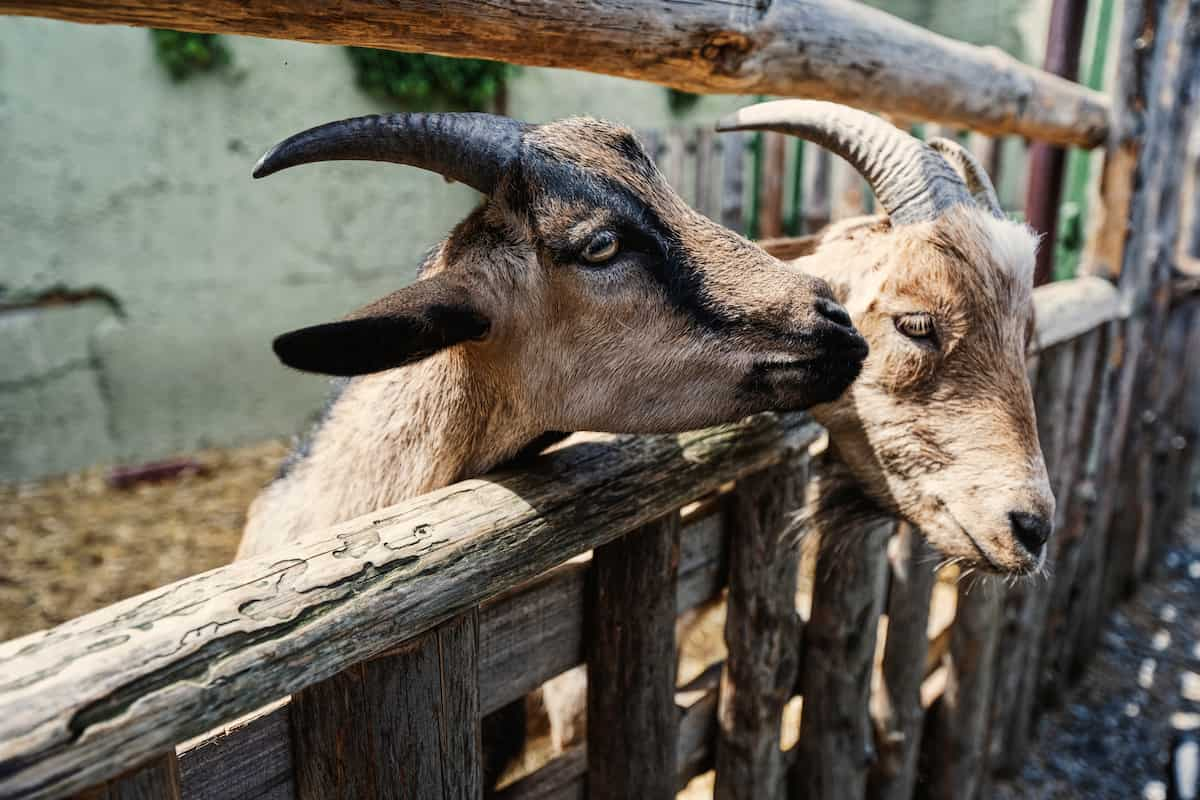Brucellosis is a bacterial infection affecting goats and other animals, including cattle, sheep, and pigs. The disease is caused by the Brucella organism, which is highly contagious and can spread easily from one animal to another. Goat owners and farmers should be aware of the risks associated with Brucellosis, as it can significantly impact animal health, productivity, and profitability.

Brucellosis Management in Goats
Causes of Brucellosis Disease in Goat
The genus Brucella is responsible for the bacterial illness known as Brucellosis. Several species of Brucella can cause disease in different animals, including B. melitensis, B. abortus, and B. suis. These highly infectious bacteria can survive in the environment for extended periods.
Ingestion of contaminated food or water and close contact with diseased animals are the two main ways Brucellosis spreads. One typical transmission method is consuming raw or unpasteurized milk, cheese, and other dairy products from infected animals. In rare instances, inhaling certain substances can potentially spread Brucellosis.
Disease Cycle of Brucellosis in Goat
Chronic Infection Phase
In this phase, the Brucella bacteria invade and survive within phagocytic macrophages, immune cells that typically engulf and destroy invading pathogens. The Brucella bacteria can evade the immune system and replicate within the macrophages, forming small granulomas. This phase can last for months or even years, during which the animal may not show any signs of illness.
Acute Infection Phase
In this phase, the Brucella bacteria spread from the granulomas to non-phagocytic epithelial cells, such as those found in the reproductive tract. This leads to inflammation and tissue damage, resulting in abortion or infertility. The bacteria are shed in large numbers in the aborted fetuses, placental membranes, and birth fluids, contaminating the Surroundings and increasing the risk of transmission to other animals or humans. The acute infection phase usually occurs in late pregnancy, around the fourth month, but can also occur during parturition or the postpartum period.
Symptoms of Brucellosis Disease in Goat
- Abortion: Abortions usually occur during the fourth month of pregnancy, and sometimes they can occur earlier. Aborted fetuses are often weak and undersized.
- Infertility: Brucellosis can cause infertility in both male and female goats. In males, it can lead to reduced sperm count and testicular inflammation. In females, it can cause damage to the reproductive tract.
- Swollen testicles: Brucellosis can cause swelling of the testicles in male goats.
- Mastitis: In some cases, Brucellosis can lead to mastitis, an inflammation of the mammary gland, which can cause pain, swelling, and a decrease in milk production.
- Lameness: Goats with Brucellosis may show signs of lameness, often due to arthritis, which can cause joint pain, swelling, and stiffness.
In case you missed it: Actinomycosis Management in Cattle: Disease Symptoms, Treatment, Prevention, and Management

Impact of Brucellosis in Goat
Brucellosis can significantly impact goats, both in terms of animal health and economic losses. The resulting loss of kids, milk production, and reproductive efficiency can have a substantial economic impact on goat farmers. Furthermore, the zoonotic disease can be transmitted from goats to humans, leading to flu-like symptoms, chronic infections, and other serious health complications.
Diagnosis of Brucellosis in Goat
- Bacteriologic examination: This involves isolating and identifying the Brucella bacteria from milk or an aborted fetus. Samples should be collected aseptically and transported to the laboratory immediately. Culture techniques can be time-consuming and require specialized laboratory facilities.
- Serological tests: These tests detect antibodies to Brucella in the serum of infected animals. Common serological tests for Brucellosis in goats include the Rose Bengal test (RBT), the Buffered Plate Antigen Test (BPAT), and the Indirect ELISA. These tests are rapid and easy to perform but may give false-positive results due to cross-reactivity with other bacterial infections.
- PCR assays: Polymerase chain reaction (PCR) assays can detect the presence of Brucella DNA in clinical samples, such as milk, blood, or tissue. PCR assays are highly specific and sensitive but require specialized equipment and expertise.
Treatment and Control of Brucellosis Disease in Goat
- There is no experimental treatment that is successful for Brucellosis in goats.
- Long-term antibiotic treatment can eliminate B. ovis infections in valuable rams, but fertility may remain poor.
- Six treatment regimens using oxytetracycline (OTC) combined with streptomycin (ST) were evaluated for eliminating Brucella melitensis from naturally-infected sheep and goats.
- Vaccination with the Rev. 1 strain is common in most countries where B. melitensis is endemic.
- The disease can be eliminated by slaughtering the infected herd.
- Bacteriologic examination of milk, an aborted fetus, or serum agglutination tests makes the diagnosis.
Preventive Measures of Brucellosis Disease in Goats
- Control of animal movement: Avoid purchasing animals from areas with a high incidence of Brucellosis. Quarantine new animals and test them before introducing them to the herd.
- Maintain a clean environment: Keep the environment clean, dry, and well-ventilated. Regularly disinfect stalls, equipment, and milking areas.
- Implement a vaccination program: Vaccinate animals with the Rev. 1 strain, an attenuated strain of B. melitensis, in areas where the disease is endemic.
- Cull-infected animals: Identify infected animals through regular testing and cull them to prevent the spread of the disease.
- Proper hygiene practices: Practice good hygiene, including washing hands with soap after handling animals or their products.
- Regular testing: Test animals regularly for Brucellosis and maintain records of the test results.
- Use protective gear: Wear protective gear such as gloves and masks when handling potentially infected animals or their products.
In case you missed it: Bovine Ephemeral Fever Management in Cattle: Disease Symptoms, Treatment, Prevention, and Management

Conclusion
Brucellosis is a significant disease in goats caused by the Brucella melitensis bacterium. It can lead to reproductive issues such as abortion and poses a zoonotic risk to humans. Proper diagnosis, treatment, and control measures are essential to prevent the spread of the disease. While eradication is the ultimate goal, effective control measures can significantly reduce the incidence of Brucellosis in goats.
Cooperation between veterinary services, farmers, and policymakers is necessary to successfully implement control and eradication strategies. We can effectively manage this disease and protect animal and human health by taking preventive measures and implementing appropriate control measures.
- Natural Solutions for Pest Control in Flower Gardens
- Types of Fungicides Used in Agriculture
- Common Issues in the Fruit Development Stage of Pomegranate Farming
- Fruit Development Issues in Papaya: Easy Solutions and Treatment
- Soil-Borne Diseases and How to Protect Your Plants
- Practices to Prevent Disease Spread in the Garden
- From Wilted to Thriving: How to Treat Root Rot Naturally in Houseplants
- Natural Remedies to Cure Brown Spots on Fig Tree Leaves
- Natural Solutions for Poinsettia Problems: 100% Effective Remedies